lianna
Member
- Joined
- Jan 11, 2013
- Messages
- 9
- Format
- 35mm
HEY APUGERS!
My name is Lianna and I am currently in the midst of my 4th year industrial design thesis project where I am designing an analog one-time-use 3-shot camera to be given out and used at promotional events, so it needs to be ultra cheap for high production runs. So whatever the housing is will end up being some kind of thin cardboard or other very cheap material but its insides could be recycled and reused when sent to the film developer during processing.
I'm using 35mm 800 ISO/APA film and there won't be any sensors or flash within the camera, somewhere between pinhole and lomography. However, because it is a product to be given out at events, it needs to be intuitive and as easy as a disposable camera to use.
The problem I'm having is the mechanics of it. Now, because it is only 3 shots, the film doesn't need to spool so I have two different directions I could go in here.
1. I'm trying to make it a rotary disc shutter type of thing, where the 3 pieces of film are on a round disc and the shutter both exposes and advances the film. I'm trying to emulate the simplicity of the old viewmaster toy seen below, where all it is is a piece of plastic with a small foot that holds the disc and a spring. I also have a cardboard prototype of how the film would sit inside the disc. If anyone has a rotary disc shutter camera or knows a lot about how it works and the mechanics within I'd love to talk to you!
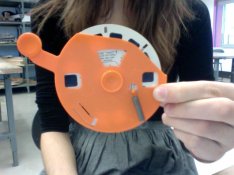

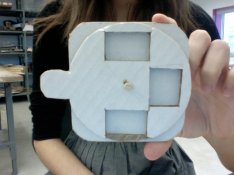

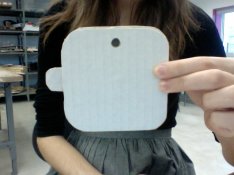
2. I'm trying to make a sliding lens so that the film never needs to move. I have a very low-resolution prototype of this below but I need a more professional opinion to figure out if it would actually work or not and any suggestions on how else this could work.
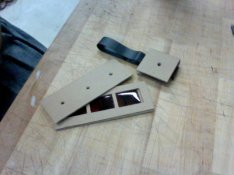
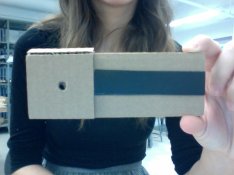


SO GUYS if anyone has anything to say about this and/or knowledge about all of this or has ever built their own camera I'd very much appreciate anything you can offer me!
Thanks in advance friends!
My name is Lianna and I am currently in the midst of my 4th year industrial design thesis project where I am designing an analog one-time-use 3-shot camera to be given out and used at promotional events, so it needs to be ultra cheap for high production runs. So whatever the housing is will end up being some kind of thin cardboard or other very cheap material but its insides could be recycled and reused when sent to the film developer during processing.
I'm using 35mm 800 ISO/APA film and there won't be any sensors or flash within the camera, somewhere between pinhole and lomography. However, because it is a product to be given out at events, it needs to be intuitive and as easy as a disposable camera to use.
The problem I'm having is the mechanics of it. Now, because it is only 3 shots, the film doesn't need to spool so I have two different directions I could go in here.
1. I'm trying to make it a rotary disc shutter type of thing, where the 3 pieces of film are on a round disc and the shutter both exposes and advances the film. I'm trying to emulate the simplicity of the old viewmaster toy seen below, where all it is is a piece of plastic with a small foot that holds the disc and a spring. I also have a cardboard prototype of how the film would sit inside the disc. If anyone has a rotary disc shutter camera or knows a lot about how it works and the mechanics within I'd love to talk to you!





2. I'm trying to make a sliding lens so that the film never needs to move. I have a very low-resolution prototype of this below but I need a more professional opinion to figure out if it would actually work or not and any suggestions on how else this could work.




SO GUYS if anyone has anything to say about this and/or knowledge about all of this or has ever built their own camera I'd very much appreciate anything you can offer me!
Thanks in advance friends!











